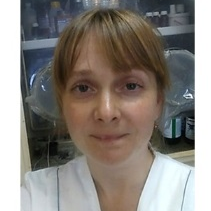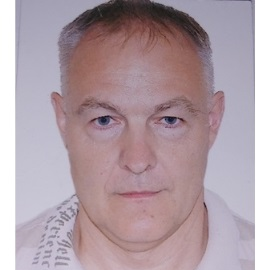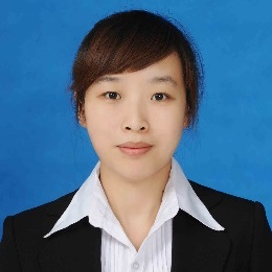Hierarchical Porous Materials: Synthesis, Properties and Applications
A special issue of Processes (ISSN 2227-9717). This special issue belongs to the section "Materials Processes".
Deadline for manuscript submissions: closed (15 January 2024) | Viewed by 9299
Special Issue Editors
Interests: hierarchical porous materials; nanocomposites based on porous materials; porous silicon; electrochemical methods for nanostructured materials; targeted drug delivery systems based on porous nanoparticles; theranostics; surface properties; scanning spreading resistance microscopy; atomic force microscopy
Interests: porous anodic alumina films; carbon bearing anodic alumina; composite coatings; optical properties; solar collectors
Special Issue Information
Dear Colleagues,
Currently, one of the emerging trends in modern materials science relates to hybrid composite materials based on porous materials with a hierarchical structure. The combination of the unique properties, on the one hand, of a hierarchical porous matrix medium and, on the other hand, guest materials (0D, 1D, 2D, 3D nanostructures) makes it possible not only to combine the advantages of each component separately into one composite material, but also to obtain new synergistic effects when combining such materials at the nanoscale. A wide range of 0D–3D nanostructures are often used as a guest phase, including metal nanodots, semiconducting colloidal quantum dots, carbon nanostructures, core-shell nanoparticles, hollow structures, rods, nanostructured metal oxides, polymers, encapsulated nanomaterials, etc. Matrix materials with a hierarchical porous structure include not only such well-known porous media as zeolites, porous silicas, aerosils, porous silicon and other porous semiconductors, tectodendrimers, carbon and polymer porous materials, but also such porous materials with special architectonics as triple periodic surfaces with minimal energy, polyoxometallates, keplerates, MXenes, etc.
Currently, the main methods for obtaining porous hierarchical materials are sintering, chemical and electrochemical etching, sol–gel synthesis, soft chemistry methods, template synthesis, self-assembling, etc. Specific synthesis methods and approaches for incorporating the guest phase into a hierarchical porous matrix are yet to be developed. When incorporated into porous media, a number of specific effects arise, such as capillarity effects, high wettability energy, shading effects, wall effects (e.g., dendritic structures), surface fractality, etc. Such effects will influence greatly the distribution of guest phases in the porous media. This is especially important for incorporation into micro- and mesopores. The task becomes more complicated when two or more materials are introduced into a porous system with a given localization at certain hierarchical levels (for example, the catalyst must be introduced into micropores, and the transport layer into macrochannels).
The main areas of application for hierarchical porous materials and the compositions based on them are as follows: energy storage devices (electrodes of fuel cells, lithium–ion batteries, supercapacitors, etc.), sensors and biosensors, catalysis, biotechnology, targeted drug delivery, and theranostics. Bioelectronics, smart fabrics, and components for flexible wearable electronics are also very promising fields of application.
This Special Issue entitled “Hierarchical Porous Materials: Synthesis, Properties and Applications” aims to present novel advances in the development of various methods of incorporating hierarchical porous materials, the study of their properties, and their applications. Topics include, but are not limited to, the following:
- Processes and incorporation strategies for formation of incorporated hierarchical porous materials;
- Porous hybrid nanoparticles and hollow structures;
- Peculiarties of investigation methods for nanocomposites based on hierarchical porous materials;
- Novel trends in application of incorporated hierarchical porous materials.
Dr. Spivak Yulia
Dr. Vrublevsky Igor
Dr. Haiying Tan
Guest Editors
Manuscript Submission Information
Manuscripts should be submitted online at www.mdpi.com by registering and logging in to this website. Once you are registered, click here to go to the submission form. Manuscripts can be submitted until the deadline. All submissions that pass pre-check are peer-reviewed. Accepted papers will be published continuously in the journal (as soon as accepted) and will be listed together on the special issue website. Research articles, review articles as well as short communications are invited. For planned papers, a title and short abstract (about 250 words) can be sent to the Editorial Office for assessment.
Submitted manuscripts should not have been published previously, nor be under consideration for publication elsewhere (except conference proceedings papers). All manuscripts are thoroughly refereed through a single-blind peer-review process. A guide for authors and other relevant information for submission of manuscripts is available on the Instructions for Authors page. Processes is an international peer-reviewed open access monthly journal published by MDPI.
Please visit the Instructions for Authors page before submitting a manuscript. The Article Processing Charge (APC) for publication in this open access journal is 2400 CHF (Swiss Francs). Submitted papers should be well formatted and use good English. Authors may use MDPI's English editing service prior to publication or during author revisions.
Keywords
- hybrid hierarchical porous materials
- incorporated porous media
- porous nanoparticles
- nanostructures
- synthesis strategies
- micropores
- mesopores
- macropores
- hybrid nanostructures
- hollow nanoparticles
Benefits of Publishing in a Special Issue
- Ease of navigation: Grouping papers by topic helps scholars navigate broad scope journals more efficiently.
- Greater discoverability: Special Issues support the reach and impact of scientific research. Articles in Special Issues are more discoverable and cited more frequently.
- Expansion of research network: Special Issues facilitate connections among authors, fostering scientific collaborations.
- External promotion: Articles in Special Issues are often promoted through the journal's social media, increasing their visibility.
- Reprint: MDPI Books provides the opportunity to republish successful Special Issues in book format, both online and in print.
Further information on MDPI's Special Issue policies can be found here.







